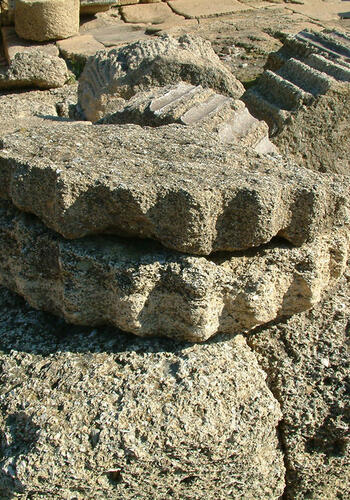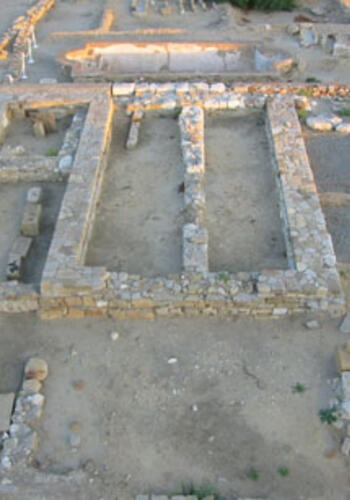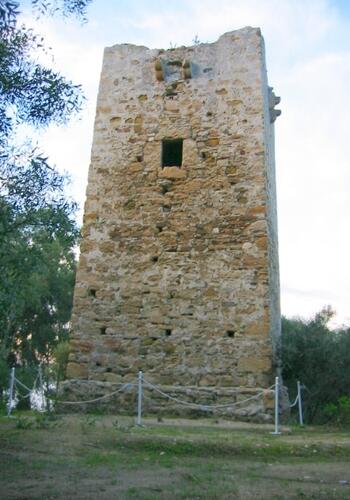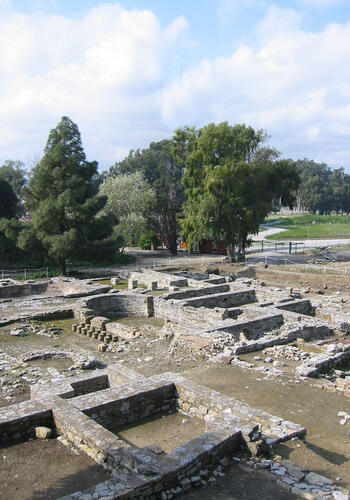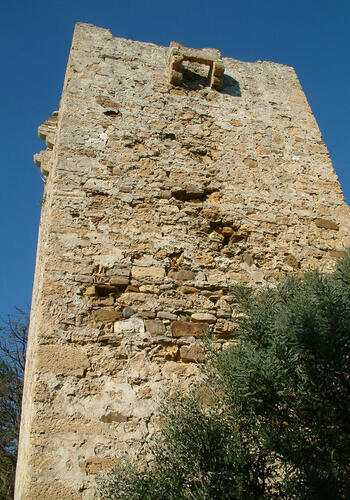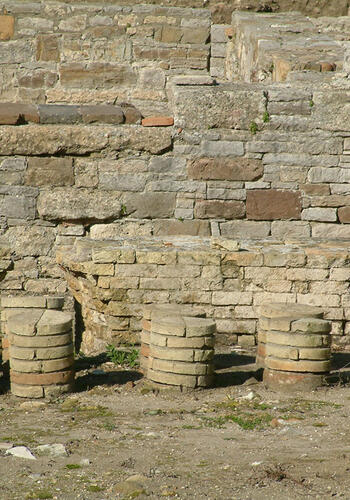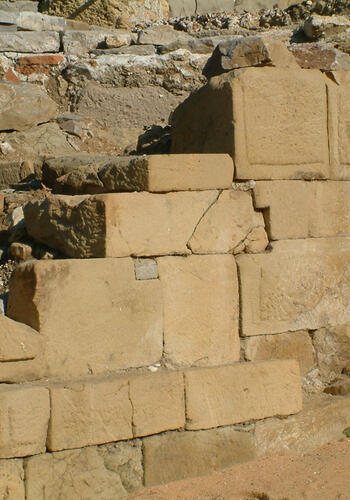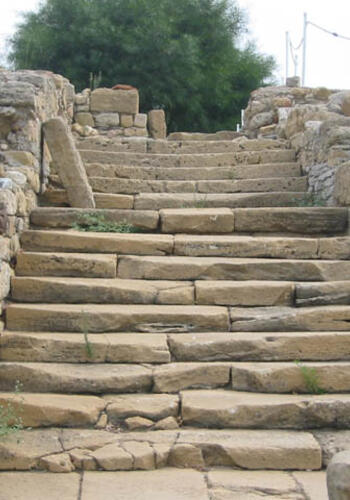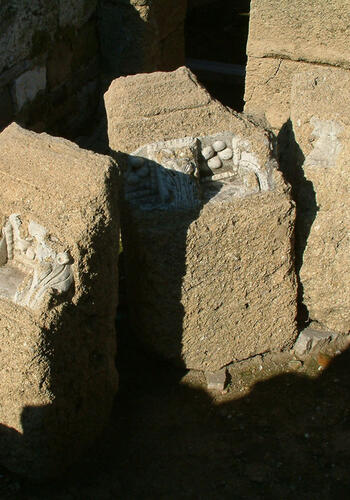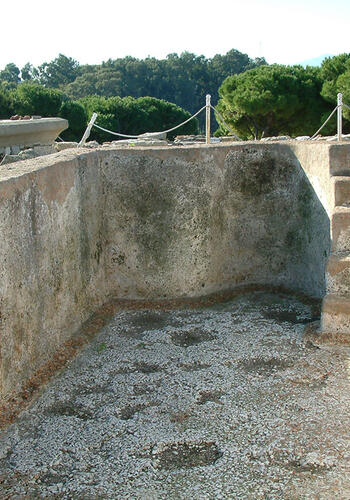de San Roque
Carteia: Roman San Roque
The Carteia Archeological Site dates from the 7th century BC and includes remains from the Phoenician, Carthaginian, Roman, Visigothic, Byzantine, Moorish and Christian eras. This ancient city was the most important in the Campo de Gibraltar area and became the first Free Latin Colony outside of present-day Italy in 171 BC.
|
In the interior of the Bay of Gibraltar, on the edge of the borough of San Roque; Carteia was founded. Located next to the Rock of Gibraltar, it occupied a perfect strategic position in relation to the trade routes of the civilized Mediterranean sea and the unknown Atlantic Ocean, with an inlet large enough to shelter a fleet. The remains of this important city are testament to its importance during certain stages of antiquity, particularly when it first came under Roman rule. One would have to go back to the 7th and 8th centuries BC to find traces of what was a Phoenician settlement near the mouth of the river Guadarranque, located on a small hill known as Cerro del Prado or Carteia la Vieja. It was in the 4th century BC that the inheritors of the Phoenician trading centre, the Punics of Carthiginia, arrived in the area and decided to relocate the settlement. The new site was closer to the coast, where the land would allow for a better expansion of the city`s facilities, whilst still providing excellent control of the Straits of Gibraltar. Thus it was the Punics who were responsable for the official founding of Carteia, whose name serves as a reminder of the city's origins through the Phoenician root word qart-. Not long after the city`s relocation the conflict between Carthiginians and Romans, known as the Punic Wars, broke out. Rome would emerge victorious with control over vast territories following a series of wars that would be remembered as one of the great milestones of the Imperial era. Despite being Punic, the people of Carteia did little to oppose the Roman presence. This meant that, after considering the possibilities of the enclave, the Romans commited to developing the city; building a walled precinct of some 27 hectares and providing all of the necessary buildings and services. The city gained prominence during the Great Civil War between Caesar and Pompey towards the end of the Republican Period because the local elites supported Pompey and gave refuge to his sons Sextus and Gnaeus who reorganised their forces from Carteia. |
To the undeniable importance of Carteia in the early days of Roman society in the Iberian Peninsula, one can add an extensive history as a commerical and military hub in which foreign cultures and peoples came and went. In this vein, there is a variety of buildings from the Dark Ages and the early Medieval period, such as the Visigothic necropolis built around the Roman temple and traces of a Byzantine presence, which reflect the intrepid efforts of Justinian I to reestablish the western roman empire. Later, Islamic sources make reference to Qartayanna in relation to different phases of the Islamic Conquest of Spain and the composition of al-Andalus. The name is kept alive by a small castle located in the highest part of the site, a few meters from the Roman walls, which were plundered for the keep's building materials. This fortification, currently known as Cartagena tower (Torre Cartagena), would be the scene of battles between christian and muslim troops from the 8th century onwards as Marinid forces settled around Algeciras and gave their support to the Nasrid rules of Granada. The city, however, began to fall into disrepair; its prominent buildings neglected. This was observed by the majority of researchers, historians, scholars and travelers; who payed little attention to the site for many years until the arrival of heavy industry in the late 1960s forced them to act. The walled perimeter of the city was saved. Unfortunately, the same cannot be said for Carteia's necropolis, roads, ancient workshops etc., which weren't conserved, even though they were once essential parts of the city. The visit gives you the opportunity to take in the Punic entrance to the city; the magnificent sandstone stairway that gives access to the ancient city centre and a possible forum; the traces of an enormous temple and its original ornamental remains, various domus and an extensive and well-preserved thermal baths complex; as well as, the remains of the original wall and the Torre del Rocadillo, a fortified watchtower built in the late 16th century. You will also be able to wander through the surviving streets, observe the topography and marvel at the vastness of the city, in which there was even a colossal theatre from the Augustan era - though it is currently not open to visitors. You can experience all of this with one of the insightful tour guides who will explain all of the historical and artistic intricacies of Carteia. Guided tours last approximately 50 minutes and are available in Spanish, English, German and French. In order to fully appreciate the history and the evolution of daily life in Carteia, we recommend visiting the Municipal museum's Carteia exhibition: located on calle San Felipe, San Roque: only 5km from the site. This is the best way to immerse yourself in a city that has been a home to many civilizations and provides excellent insight into the cultural heritage and history of what we now call Andalucia. |
Useful information:
To access Carteia, from autovía A-7, take exit 116 and continue towards Guadarranque. Contact details for the Carteia Archeological site: Tel: 956 90 80 30 / 600 14 30 14
|
|


